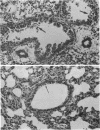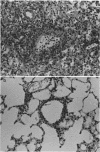Abstract
Equine herpesvirus 1 was established in adult mice by means of intranasal inoculation. A disease developed that showed several features closely resembling the infection in the natural host. These included the restriction of virus replication to the respiratory tract and blood, the replication of virus in ciliated mucosa, and development of viremia for several days during the acute phase of the infection. Infected mice were treated with the antiviral agent (S)-9-(3-hydroxy-2-phosphonylmethoxypropyl)adenine. A marked effect was observed on virus replication in the respiratory tract when chemotherapy was commenced 1 day before virus inoculation; it also cleared the viremia and reversed the progression of clinical signs. When chemotherapy was commenced 1 day after virus inoculation, a moderate, though less marked effect was observed. The efficacy of this drug in the murine infection correlated with activity of the drug against equine herpesvirus 1 in cell cultures. The prospects for chemotherapy in the natural host are discussed in the light of these findings.
Full text
PDF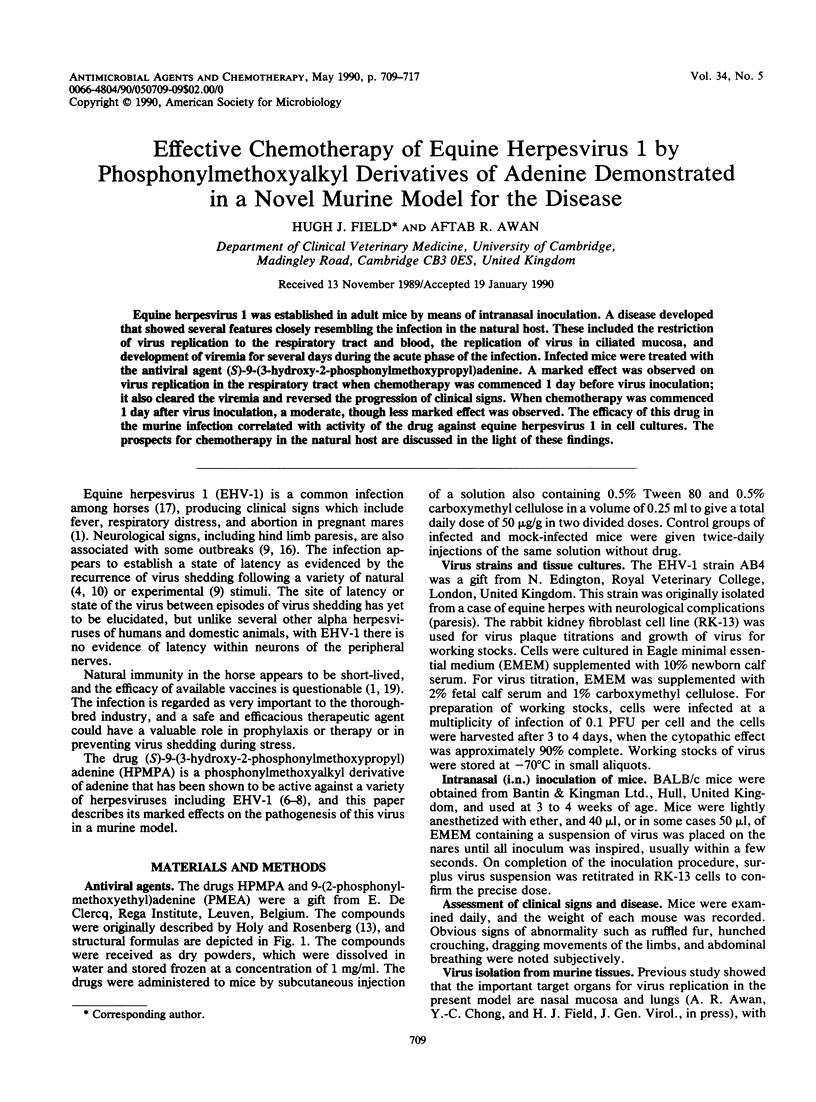

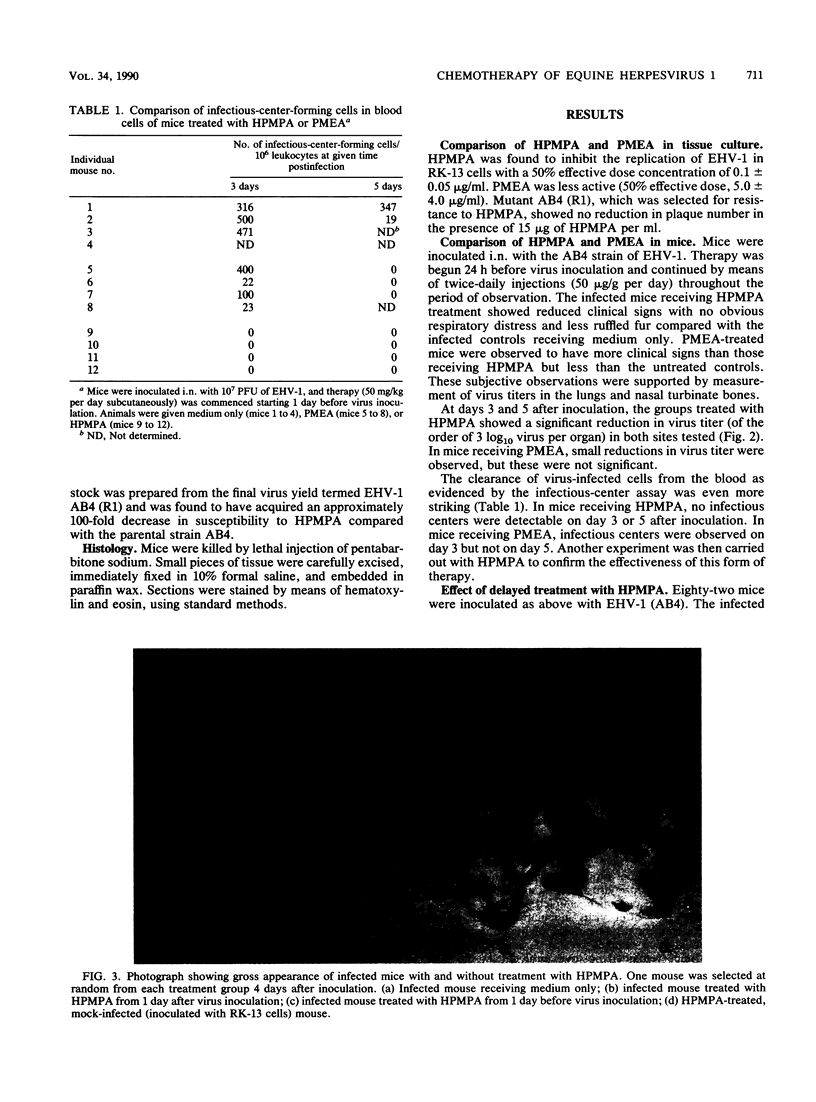
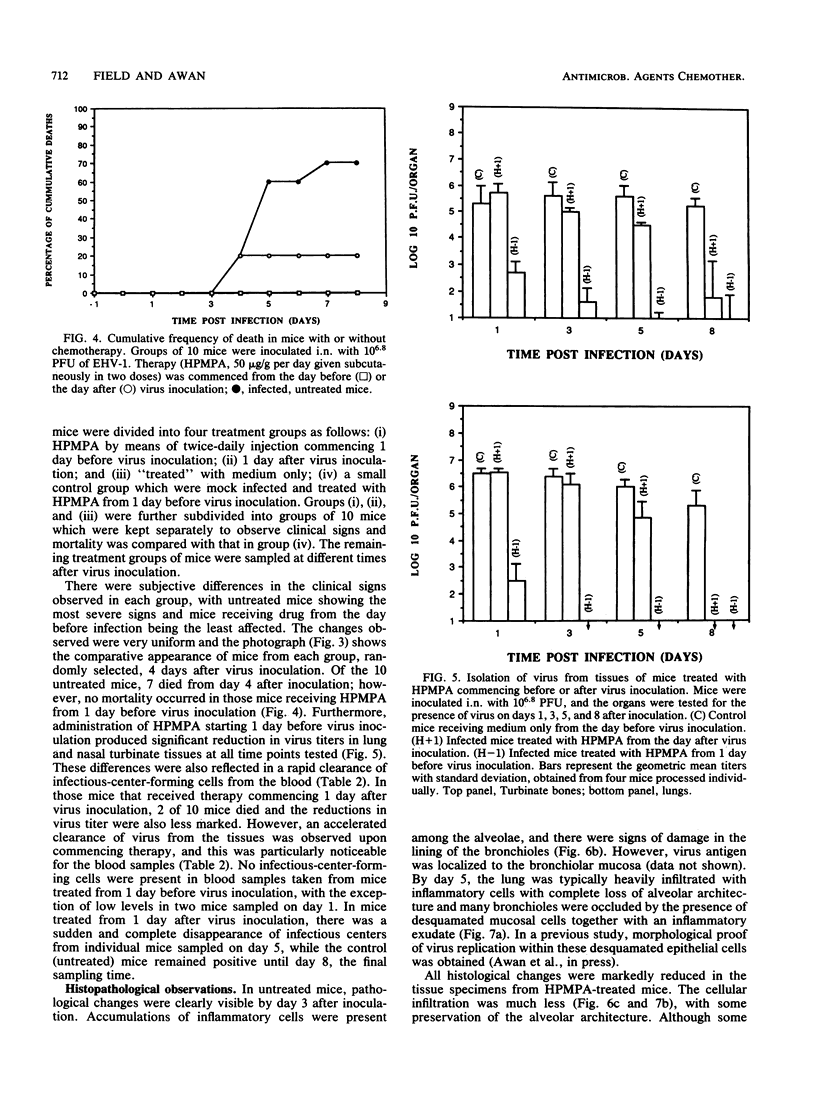
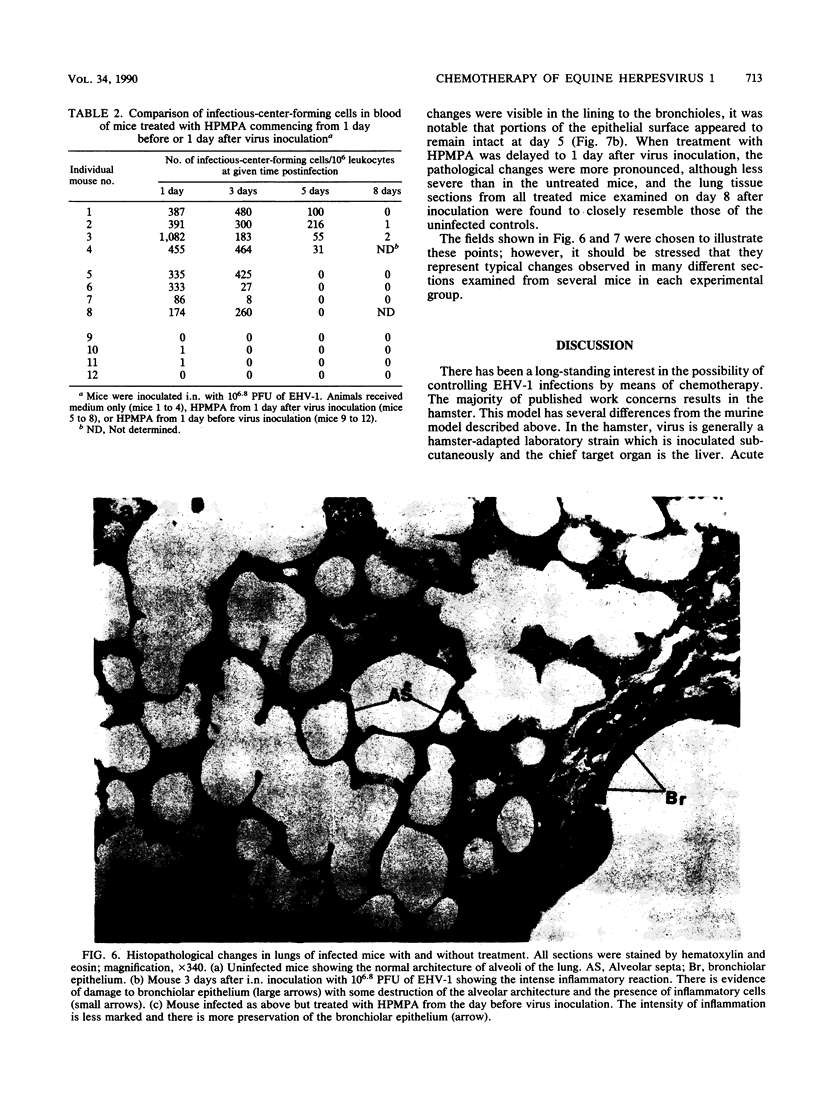
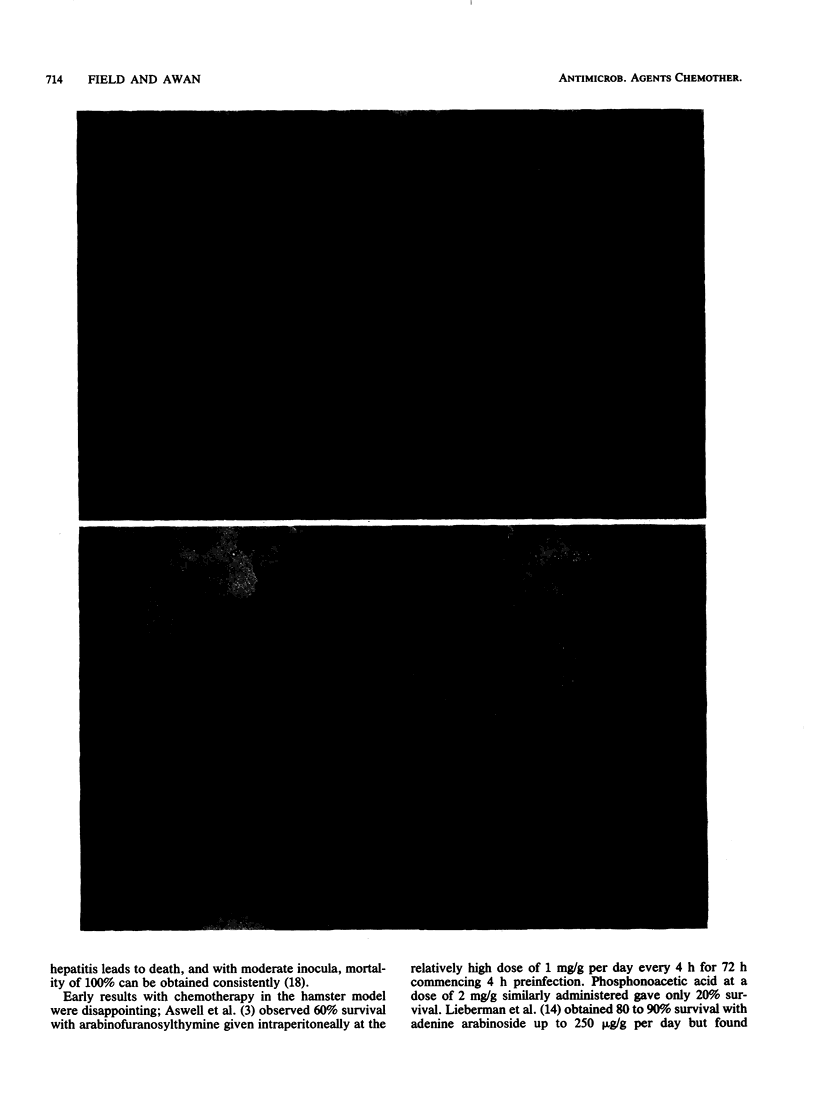
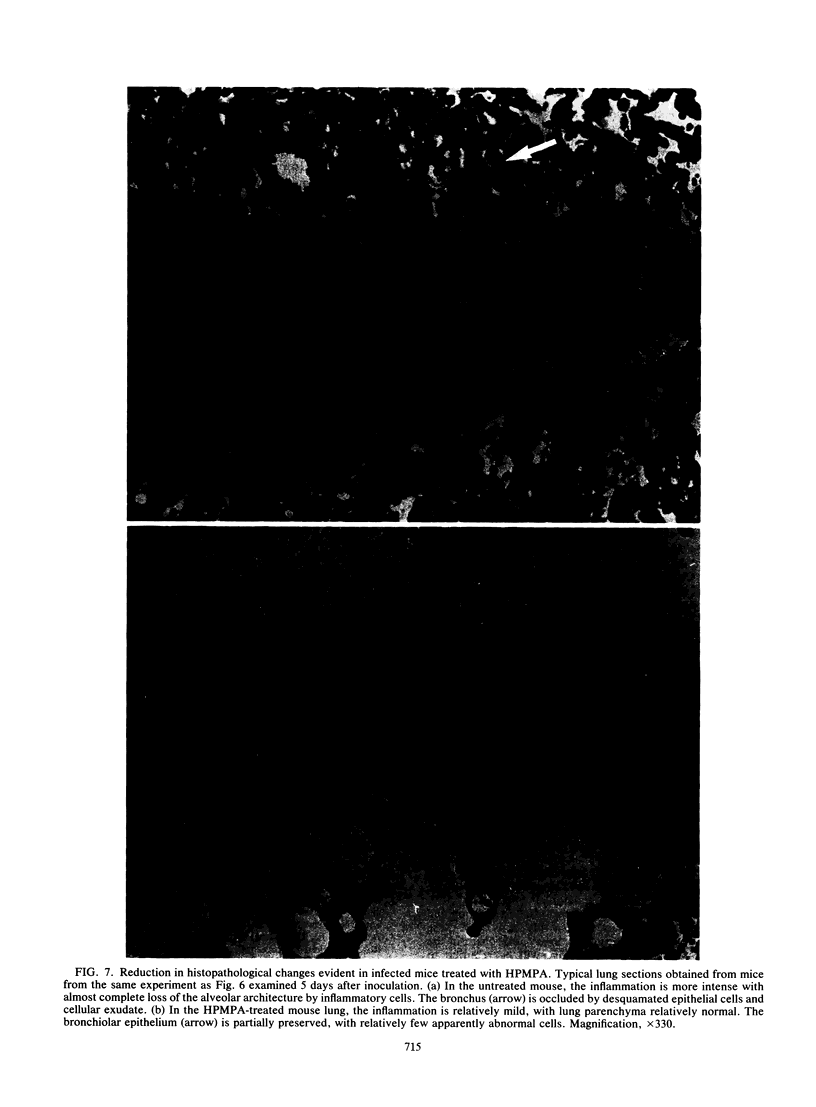
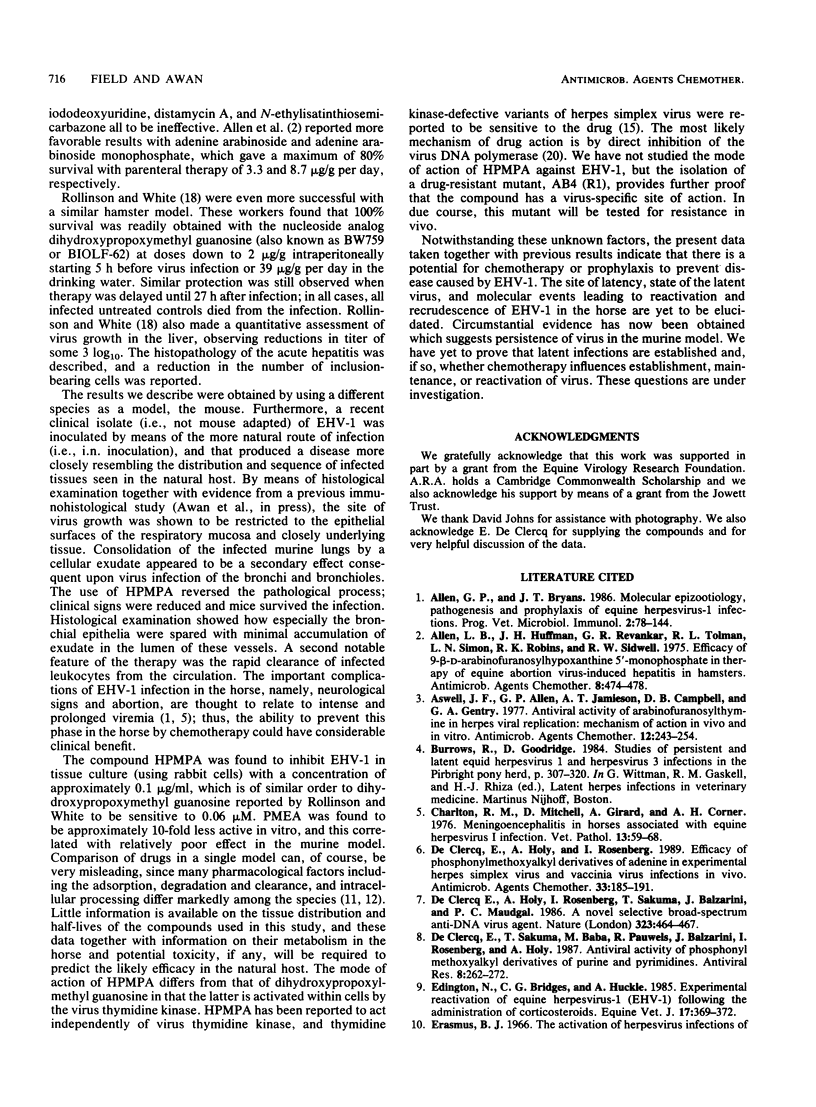
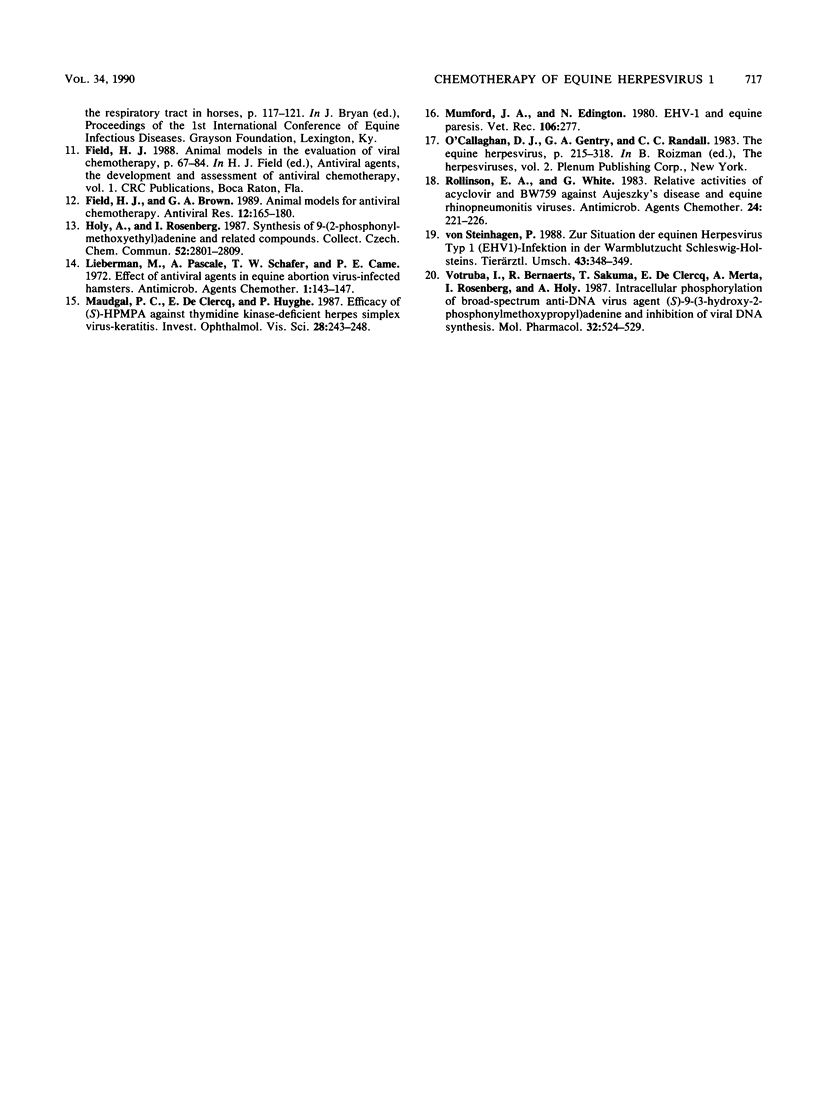
Images in this article
Selected References
These references are in PubMed. This may not be the complete list of references from this article.
- Allen G. P., Bryans J. T. Molecular epizootiology, pathogenesis, and prophylaxis of equine herpesvirus-1 infections. Prog Vet Microbiol Immunol. 1986;2:78–144. [PubMed] [Google Scholar]
- Allen L. B., Huffman J. H., Revankar G. R., Tolman R. L., Simon L. N., Robins R. K., Sidwell R. W. Efficacy of 9-beta-D-arabinofuranosylhypoxanthine 5'-monophosphate in therapy of equine abortion virus-induced hepatitis in hamsters. Antimicrob Agents Chemother. 1975 Oct;8(4):474–478. doi: 10.1128/aac.8.4.474. [DOI] [PMC free article] [PubMed] [Google Scholar]
- Aswell J. F., Allen G. P., Jamieson A. T., Campbell D. E., Gentry G. A. Antiviral activity of arabinosylthymine in herpesviral replication: mechanism of action in vivo and in vitro. Antimicrob Agents Chemother. 1977 Aug;12(2):243–254. doi: 10.1128/aac.12.2.243. [DOI] [PMC free article] [PubMed] [Google Scholar]
- Charlton K. M., Mitchell D., Girard A., Corner A. H. Meningoencephalomyelitis in horses associated with equine herpesvirus 1 infection. Vet Pathol. 1976;13(1):59–68. doi: 10.1177/030098587601300107. [DOI] [PubMed] [Google Scholar]
- De Clercq E., Holý A., Rosenberg I. Efficacy of phosphonylmethoxyalkyl derivatives of adenine in experimental herpes simplex virus and vaccinia virus infections in vivo. Antimicrob Agents Chemother. 1989 Feb;33(2):185–191. doi: 10.1128/aac.33.2.185. [DOI] [PMC free article] [PubMed] [Google Scholar]
- De Clercq E., Holý A., Rosenberg I., Sakuma T., Balzarini J., Maudgal P. C. A novel selective broad-spectrum anti-DNA virus agent. Nature. 1986 Oct 2;323(6087):464–467. doi: 10.1038/323464a0. [DOI] [PubMed] [Google Scholar]
- De Clercq E., Sakuma T., Baba M., Pauwels R., Balzarini J., Rosenberg I., Holý A. Antiviral activity of phosphonylmethoxyalkyl derivatives of purine and pyrimidines. Antiviral Res. 1987 Dec;8(5-6):261–272. doi: 10.1016/s0166-3542(87)80004-9. [DOI] [PubMed] [Google Scholar]
- Edington N., Bridges C. G., Huckle A. Experimental reactivation of equid herpesvirus 1 (EHV 1) following the administration of corticosteroids. Equine Vet J. 1985 Sep;17(5):369–372. doi: 10.1111/j.2042-3306.1985.tb02524.x. [DOI] [PubMed] [Google Scholar]
- Field H. J., Brown G. A. Animal models for antiviral chemotherapy. Antiviral Res. 1989 Nov;12(4):165–180. doi: 10.1016/0166-3542(89)90027-2. [DOI] [PubMed] [Google Scholar]
- Lieberman M., Pascale A., Schafer T. W., Came P. E. Effect of antiviral agents in equine abortion virus-infected hamsters. Antimicrob Agents Chemother. 1972 Feb;1(2):143–147. doi: 10.1128/aac.1.2.143. [DOI] [PMC free article] [PubMed] [Google Scholar]
- Maudgal P. C., De Clercq E., Huyghe P. Efficacy of (S)-HPMPA against thymidine kinase-deficient herpes simplex virus-keratitis. Invest Ophthalmol Vis Sci. 1987 Feb;28(2):243–248. [PubMed] [Google Scholar]
- Mumford J. A., Edington N. EHV1 and equine paresis. Vet Rec. 1980 Mar 22;106(12):277–277. doi: 10.1136/vr.106.12.277-a. [DOI] [PubMed] [Google Scholar]
- Rollinson E. A., White G. Relative activities of acyclovir and BW759 against Aujeszky's disease and equine rhinopneumonitis viruses. Antimicrob Agents Chemother. 1983 Aug;24(2):221–226. doi: 10.1128/aac.24.2.221. [DOI] [PMC free article] [PubMed] [Google Scholar]
- Votruba I., Bernaerts R., Sakuma T., De Clercq E., Merta A., Rosenberg I., Holý A. Intracellular phosphorylation of broad-spectrum anti-DNA virus agent (S)-9-(3-hydroxy-2-phosphonylmethoxypropyl)adenine and inhibition of viral DNA synthesis. Mol Pharmacol. 1987 Oct;32(4):524–529. [PubMed] [Google Scholar]





